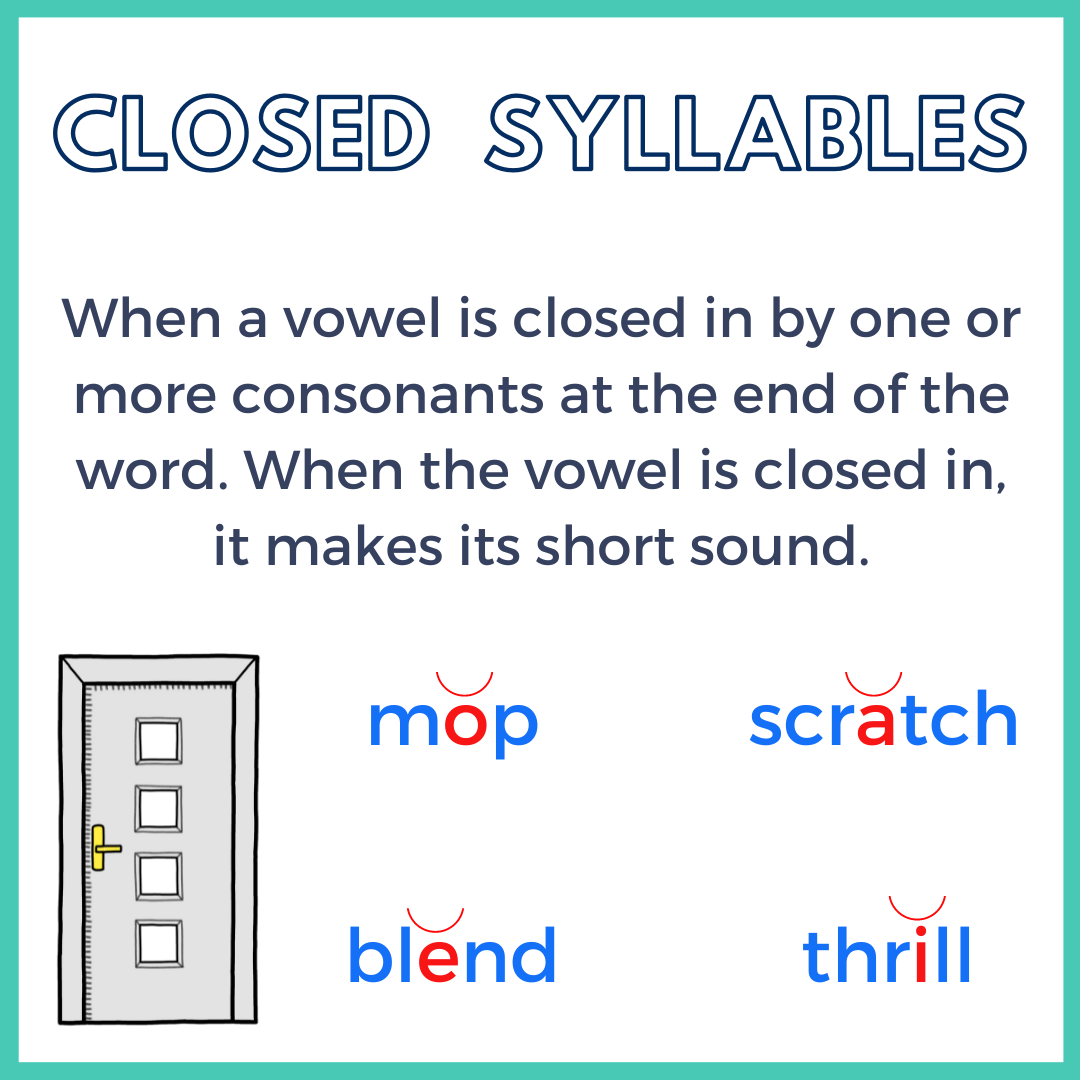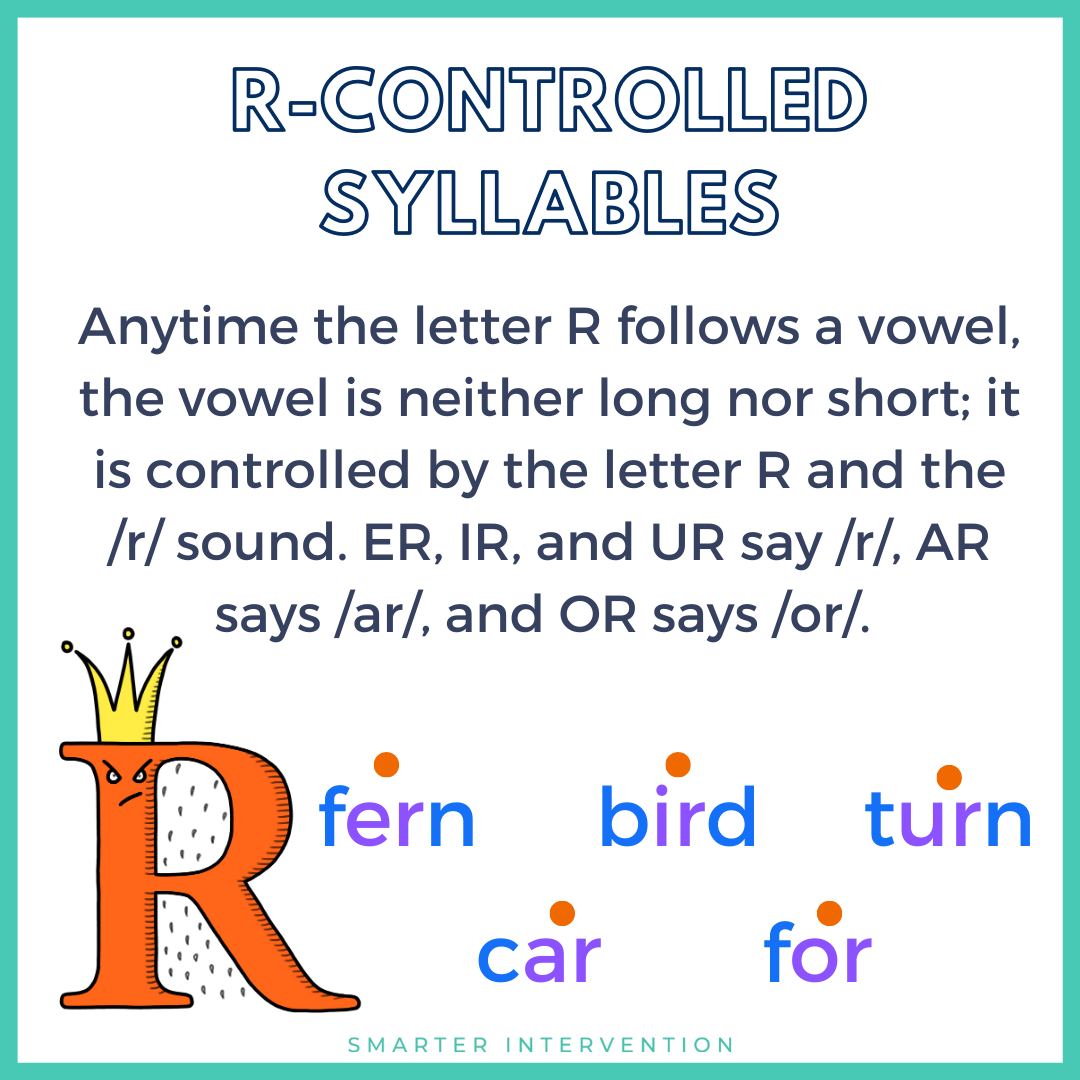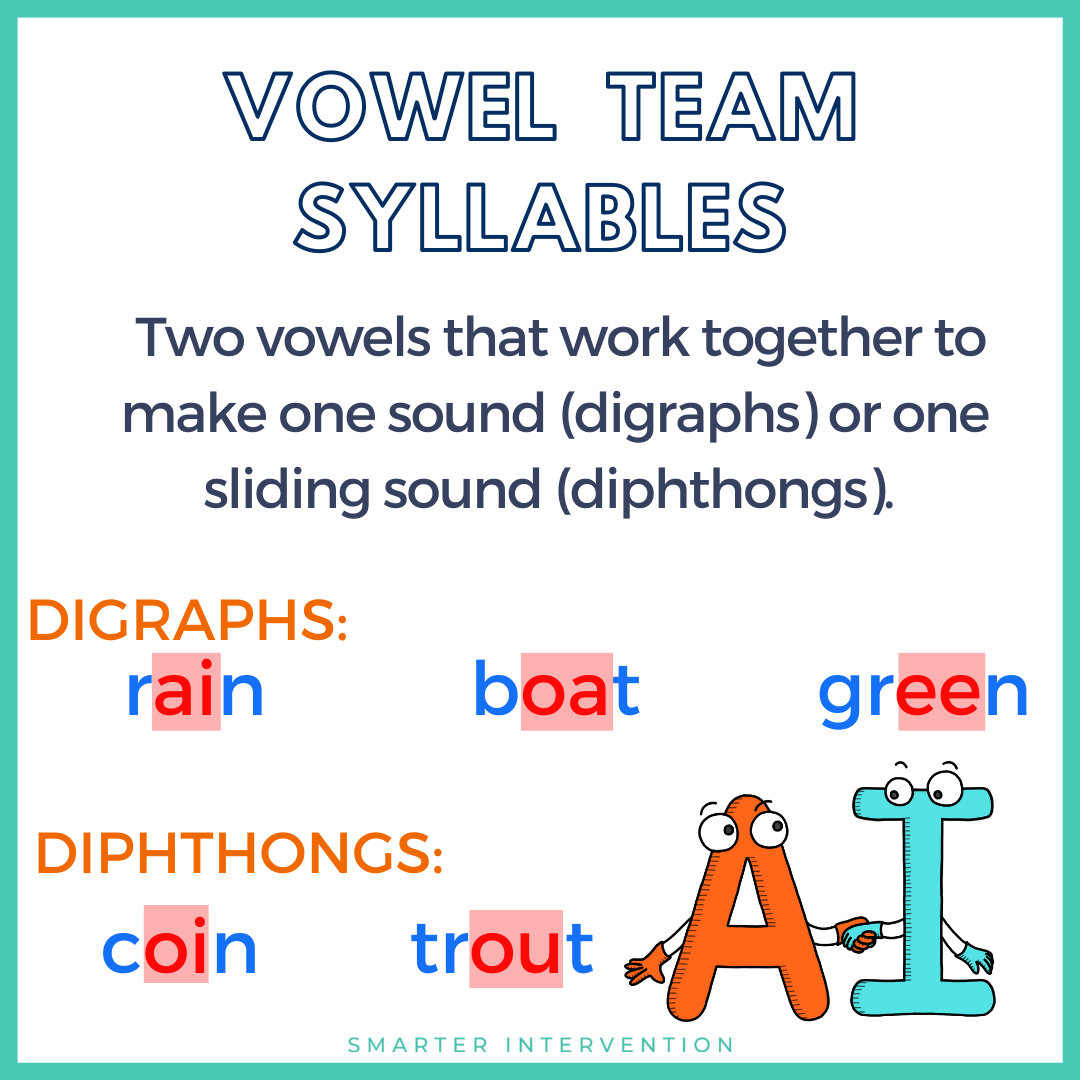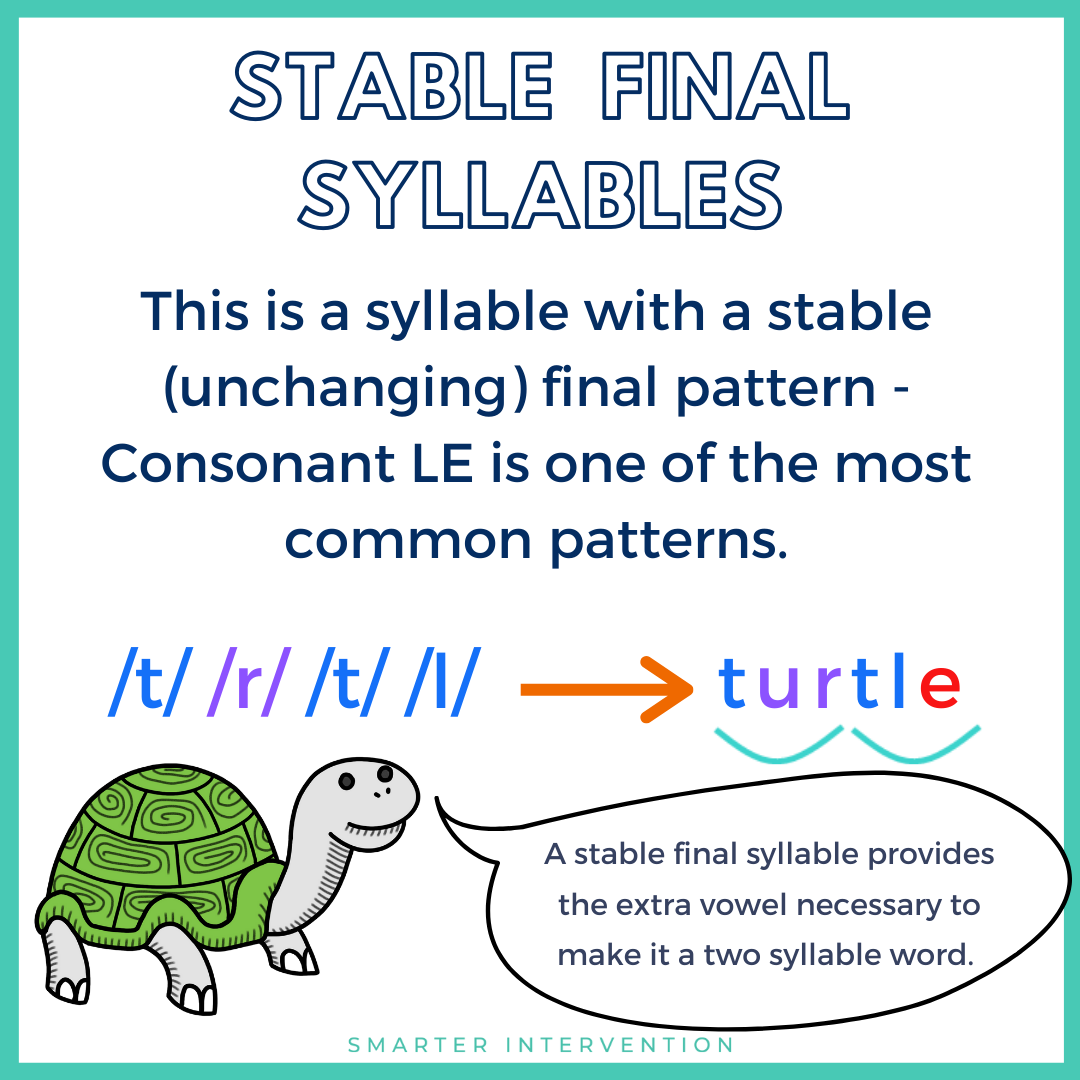Why Do We Teach the Six Syllable Types?
Have you ever tried to organize something, but had no idea where to start?
We're talking about organizing a FULL classroom with all of the decorations, games, resources, materials, and more.
It's hard! If we don't have a game plan to help us organize, the process can be completely overwhelming.
Learning phonics is kind of like that.
In English, there are 26 letters. Often, students are explicitly taught the alphabet when they are young and maybe a few of the digraphs (like sh, th, and ch). However, for many, this is where the explicit phonics instruction stops.
When we start to look at letter combinations and all of the phonemes, there are about 44 total sounds to remember (though, this number can vary a bit depending on accents and differences in articulation). Pair these with needing to know when to use certain patterns (when do we use a g, vs. a j, vs. a dge, vs. a ge), and it can feel like we are drowning in phonics rules.
That’s why we teach phonics patterns within syllable-type categories.
This supports students’ short-term working memory as they learn, and their long-term retention of phonics patterns. It provides them with a clear organizational system to help them not only make sense of these patterns - but also apply this knowledge to reading and spelling their words.
Why do we teach the six syllable types?
In English, we have six syllable types. Syllables are the bridge between our sounds and our words. They help us know what the vowels in our words say and clue us into which phonograms we need to use as we spell our words.
For example, the word "cat" is a closed syllable so the ‘a’ makes its short sound. The word “page” is a VCE syllable so the ‘a’ makes its long sound. The word “main” is a vowel team so ‘ai’ works together to make the long A sound. We use ai instead of ay (which also makes the long A sound) because we hear /A/ in the middle of a syllable.
Syllable types provide students with a categorization system to help them organize the different sounds and phonics rules within the English Language.
So that leads us to the next question…
What are the six syllable types?
The six syllable types include…
1. Closed Syllables
This is a syllable containing one vowel that is closed in by a consonant. The vowel usually makes its short sound. (Examples: cat, ship, rest, thick, in).
You can learn more about closed syllables here!
2. Vowel-Consonant-E (Magic E or Silent E)
This is a syllable with a vowel immediately followed by one consonant and then an E. The E is silent but makes the preceding vowel long. Examples: bike, fate, share
You can learn more about VCE syllables here!
3. R-Controlled
This is a syllable with an R immediately following a vowel. The vowel sound becomes distorted and is neither long nor short. Examples: car, horn, shirt, bird, turn
You can learn more about R-controlled syllables here!
4. Open Syllables
This is a syllable containing one vowel that is left open at the end. The vowel makes its long sound. Examples: hi, be, she, go, shy
You can learn more about open syllables here!
5. Vowel Teams (Digraphs & Diphthongs)
This is a syllable with two vowels (generally - sometimes letters like W like to sneak in here) that work together to make one sound (digraphs) or one sliding sound (diphthongs). Examples: team, boy, sheet, train
You can learn more about vowel team syllables here!
6. Consonant-LE (-CLE)
This is a syllable with a consonant, followed by an L, followed by an E. The E is silent. This is always the final syllable in a multi-syllabic word (excluding suffixes). Examples: apple, Skittle, shuffle, purple.
Teaching phonics patterns according to their syllable types helps students “bucket” similar rules and patterns to make learning easier. It is also incredibly helpful when lesson planning because it helps our instruction feel cohesive.
Grab these FREE Syllable-Type Anchor Charts to use with your students!
You can hang these in your classroom or print a few to a page and make a small reference guide for students to keep in their desks. Get your own copy of these Syllable Type Anchor Charts below!
Then, check out the video below for more information about how we teach these syllable types to our students.








